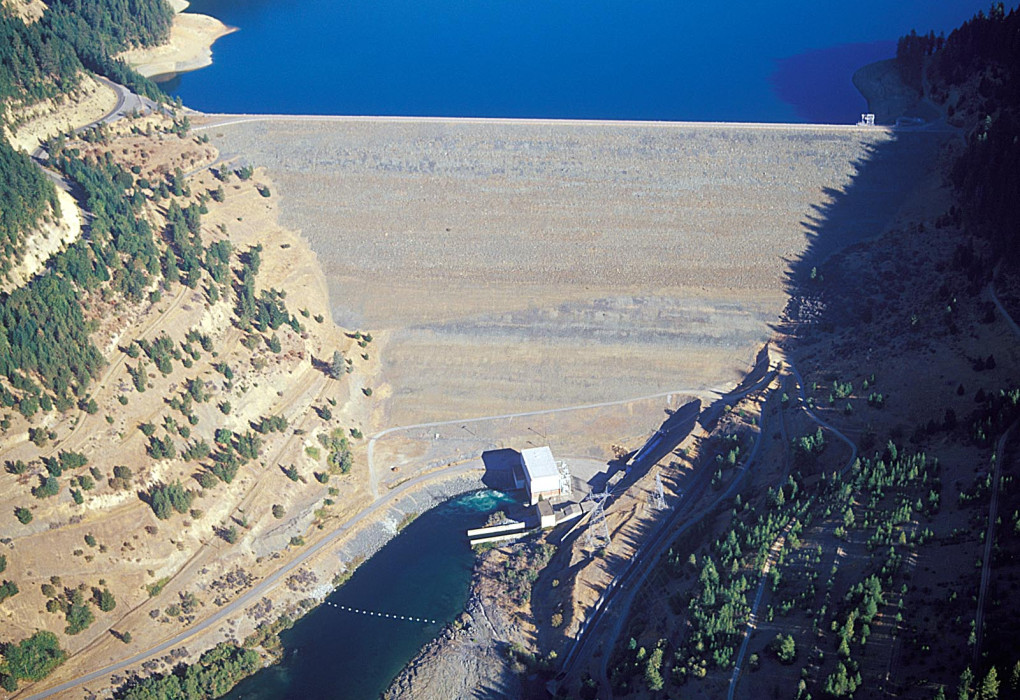StEELhead Discoveries Series - Part 5
*This is Part 5 of an ongoing series on the campaign to Free the Eel and efforts to better understand and revive the iconic steelhead in the Pacific Northwest by Native Fish Society Fellow Samantha Kannry. View all parts of the series HERE. Additional parts and updates will be posted over the next several months. Stay tuned!
~ ~ ~ ~ ~ ~
"Words fail to describe the relief that comes when dam removal is actually underway. There will be a deep peace for folks working and living on the Klamath to know that ocean-going fish will once again be able to access those ancient shallow lake basins, and swim through the arid canyons, so distinct from the coastal redwood forest they entered freshwater in. And while the Eel River dam relicensing process is still ongoing, all signs point to dam removal, it is more a matter of when. To see dam removal as a reality is quite heartening for people who have studied the upper Eel above the dams, or been telling their communities and their representatives for decades that minimal benefit is coming from the recreation and water storage capacity of the dams.
However, there are far more rivers and creeks where these discussions are not happening. Where river “restoration” takes on the form of hatchery mitigation and flow releases that attempt to mimic some portion of a natural hydrograph. In these places, resource managers, biologists and restorationists have an impossible task: fix the problem of widespread species decline without being able to consider addressing one of the main causes.
The Trinity River is one such place. Unlike many other northern California coastal rivers, where dams are providing water storage or diversions for water users in the region, the Trinity water is diverted into the Sacramento River. The water then becomes part of the mind-boggling system of dams, aqueducts, tunnels and pumps that forms California’s irrigation system in the Central Valley. There is no serious discussion of removing any of the dams that provide water storage into this system. That would go against the will of California’s agricultural industry, and a more formidable adversary would be hard to find.
Above the dam on the Trinity River is a substantial amount of low gradient mainstem and tributary habitat. This area drains the eastern Trinity Alps and Castle Crags Wildernesses, resulting in ample cold water throughout the hot summer months. Most of the Trinity suffered serious impacts from hydraulic and other forms of mining, and the massive tailings piles are visible relics of the alterations. We spent our most recent sampling trip looking for juvenile steelhead above the Trinity dam and reservoir complex. We found ample tailings piles and disturbances, but also ample spawning and rearing habitat. There was abundant cold, clear water rushing down from mountain peaks and meadows, but very few fish. Every tributary we went to required three to four times the effort of lower Trinity tributaries to catch less fish. A relic resident population of rainbow trout (most likely with some mixed hatchery ancestry) exists above the dam, but the lack of anadromous fish is readily apparent. We hope that somewhere in the not too distant future, conversations about dams on the other side of the Klamath watershed get underway."
-Samantha Kannry

~~~~~
About the Author:
Samantha Kannry has been monitoring, studying, and swimming with summer-run steelhead in the Eel River and other rivers of Northwestern California for the past thirteen years. She joined NFS as a volunteer in 2015, then became a fish genetics fellow in 2020.
While it has been clear to the native peoples of the region since time immemorial that summer-run steelhead and the congeneric spring Chinook are separate populations, not everyone else sees it so clearly. Her research has focused on using conservation genetic tools to elucidate the distinction between summer and winter-run steelhead.
When not minking (a combination of hiking, swimming, snorkeling, sliding, shimmying, and boulder jumping) down rivers, she is usually growing and eating fruit, moving manure at Caudal Fin Farm, or bike touring distances large and small. All working towards re-establishing the inherent continuity between rivers, land, and people.
Read StEELhead Discoveries Part 1 - 4 HERE.
